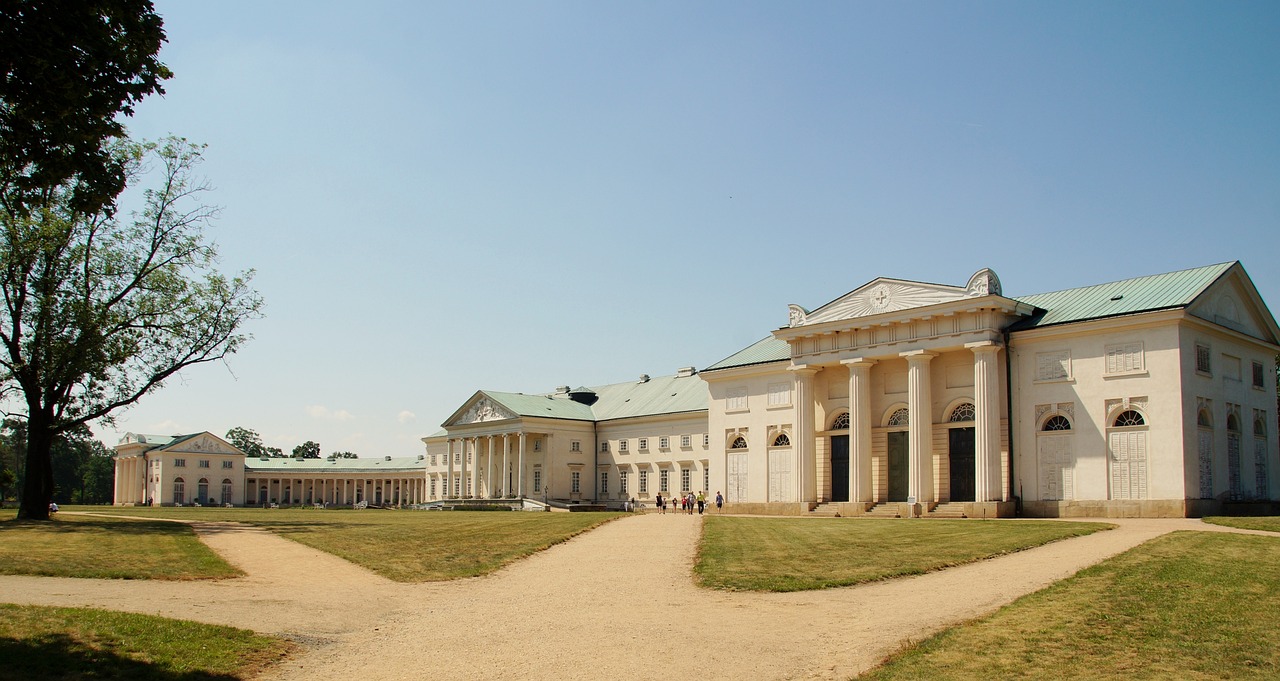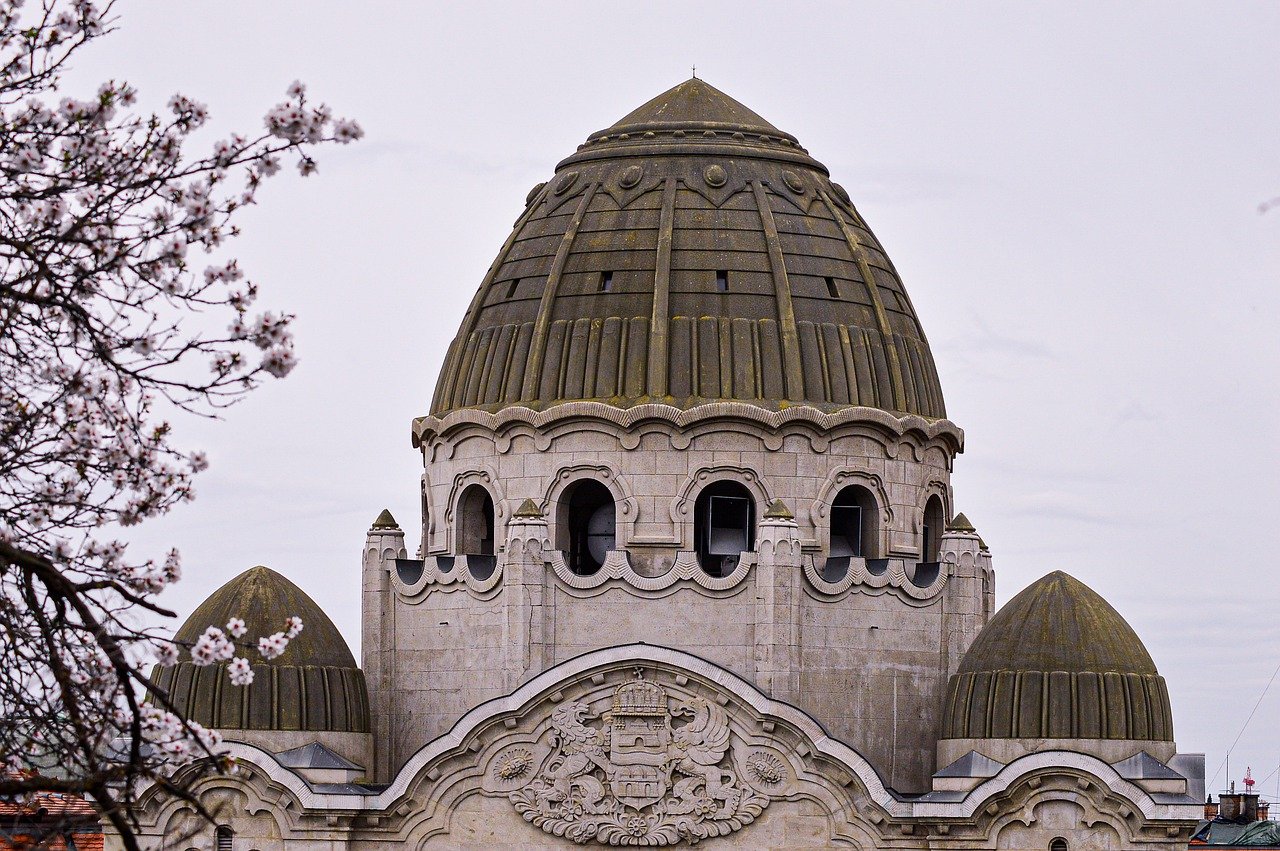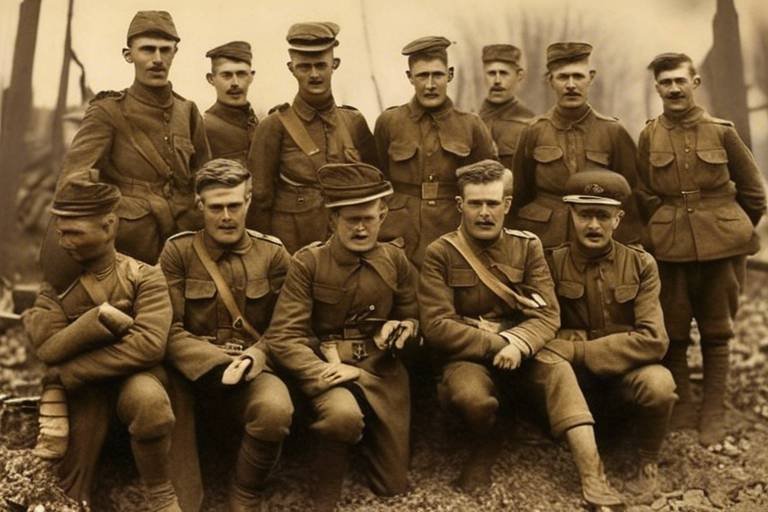The Byzantine Empire - Continuity of the Roman Legacy
The Byzantine Empire, often considered the continuation of the Roman Empire in the East, played a significant role in shaping the history of the Eastern Mediterranean region. Established in the 4th century AD, the Byzantine Empire inherited the traditions and institutions of its Roman predecessor, blending them with Greek culture and Christian influences.
One of the key aspects that set the Byzantine Empire apart was its unique political structure and administration. The emperor held supreme power as both the secular and religious leader, supported by a sophisticated bureaucracy that managed the vast empire divided into themes and provinces. This system allowed for efficient governance and centralized control over a diverse territory.
Religion and culture were integral to the identity of the Byzantine Empire. Christianity became the state religion, influencing all aspects of life and art. Byzantine art and architecture flourished, characterized by intricate mosaics, religious icons, and monumental buildings such as the Hagia Sophia. The empire also played a crucial role in preserving classical knowledge and literature, ensuring the continuity of ancient wisdom.
Economically, the Byzantine Empire thrived as a hub of trade and commerce. Constantinople, the capital city strategically located between Europe and Asia, became a bustling center of economic activity. The empire's policies promoted trade networks that connected the East and West, facilitating the exchange of goods, ideas, and cultures.
Military power was another cornerstone of the Byzantine Empire's strength. Innovative military strategies, well-trained troops, and formidable fortifications protected the empire from external threats. The elite Varangian Guard, composed of Norse warriors, symbolized the empire's diverse and effective defense forces.
Despite its achievements, the Byzantine Empire faced numerous challenges that eventually led to its decline. Internal power struggles, external invasions, and economic instability weakened the empire over time. The conquest of Constantinople by the Ottoman Turks in 1453 marked the end of the Byzantine Empire, closing a chapter of history that had endured for over a thousand years.
The legacy of the Byzantine Empire continues to resonate in the modern world. Its influence on art, architecture, law, and religion can be seen in Eastern Europe and the Middle East. The Byzantine legacy serves as a reminder of the enduring impact of ancient civilizations on shaping the cultural identity of regions far beyond their original borders.

Introduction to the Byzantine Empire
The Byzantine Empire, often overlooked in historical narratives, played a pivotal role in shaping the course of the Eastern Mediterranean region. Emerging as the continuation of the Roman Empire, the Byzantine Empire stood as a beacon of civilization and power for over a millennium. Its influence extended far beyond its borders, leaving a lasting legacy that continues to resonate in the modern world.

Political Structure and Administration
Known for its rich history and lasting influence, the Byzantine Empire stands as a testament to the continuation of the Roman legacy in the Eastern Mediterranean region. Let's delve into the intriguing world of the Byzantine Empire and uncover its political structure, cultural achievements, economic prowess, military strategies, challenges, and enduring legacy.
The Byzantine Empire boasted a unique political structure that set it apart from its predecessors. At the helm of power was the emperor, who wielded both political and religious authority. Supported by a complex bureaucracy, the emperor governed the empire with the help of officials known as *logothetes*, overseeing various administrative functions.
The empire was divided into themes and provinces, each governed by a *strategos* or *dukes*. These regional leaders played a crucial role in maintaining law and order, collecting taxes, and upholding the emperor's authority. The division of the empire into these administrative units helped in effective governance and defense against external threats.
Furthermore, the Byzantine Empire's legal system was based on Roman law but evolved over time to incorporate elements of Greek traditions. This blend of legal principles contributed to the empire's stability and coherence, ensuring a sense of continuity with its Roman past.
In terms of succession, the Byzantine Empire often witnessed power struggles and dynastic conflicts. The concept of *autocracy* prevailed, emphasizing the emperor's absolute authority. Despite occasional challenges to imperial power, the Byzantine political system remained resilient and adaptable, allowing the empire to endure for centuries.
Additionally, the Byzantine Empire's diplomatic relations with neighboring states and foreign powers played a crucial role in shaping its political landscape. Through strategic alliances, treaties, and negotiations, the empire sought to maintain its influence and protect its interests in a volatile geopolitical environment.
Overall, the political structure and administration of the Byzantine Empire reflected a blend of Roman traditions, Greek influences, and innovative governance practices that contributed to its longevity and historical significance.

Religion and Culture
Religion and culture played a pivotal role in shaping the identity of the Byzantine Empire. At the heart of Byzantine society was Christianity, which not only served as a unifying force but also influenced every aspect of life. The Byzantines viewed themselves as the defenders of the Orthodox faith, and the emperor was not only the political leader but also the spiritual head of the Church.
One of the most significant contributions of the Byzantine Empire to the world was the development of Byzantine art and architecture. Characterized by intricate mosaics, richly decorated churches, and iconic religious imagery, Byzantine art reflected the empire's deep religious convictions. The Hagia Sophia in Constantinople stands as a testament to the Byzantine mastery of architectural design and engineering.
Moreover, the Byzantines were avid patrons of learning and scholarship, preserving and translating classical texts that would have otherwise been lost to history. The Byzantine scholars played a crucial role in transmitting ancient knowledge to the West during the Dark Ages, laying the foundation for the Renaissance.
The Byzantine Empire's cultural influence extended beyond its borders, shaping the artistic traditions of neighboring regions and leaving a lasting legacy on the art, architecture, and religious practices of Eastern Europe and the Middle East. The fusion of Roman, Greek, and Eastern influences in Byzantine culture created a unique and enduring legacy that continues to inspire artists and scholars to this day.

Economic Prosperity and Trade
During its peak, the Byzantine Empire flourished economically, establishing itself as a hub of prosperity and trade in the medieval world. At the heart of this economic success was the strategic location of Constantinople, which served as a vital link between Europe and Asia. The city's position along major trade routes facilitated the exchange of goods, ideas, and cultures, contributing to its reputation as a bustling commercial center.
One of the key factors that fueled the economic prosperity of the Byzantine Empire was its robust trade networks. Merchants from distant lands converged in Constantinople, bringing with them a diverse array of products such as silk, spices, precious metals, and luxury goods. The Byzantines engaged in trade not only within the empire but also with neighboring regions, fostering economic growth and cultural exchange.
Moreover, the Byzantine government implemented policies that supported and regulated trade, ensuring the smooth flow of goods and services. The empire's currency, the solidus, was widely recognized and accepted, facilitating transactions both domestically and internationally. This monetary stability further boosted confidence in the Byzantine economy and encouraged trade with foreign merchants.
Constantinople's status as a major trading hub was further reinforced by the presence of bustling marketplaces and commercial districts. The city's markets bustled with activity, offering a wide range of products for sale and attracting buyers from near and far. The Byzantine Empire's economic prosperity was also supported by its skilled artisans and craftsmen, who produced high-quality goods sought after in markets across the known world.
Additionally, the Byzantine Empire's control over key trade routes and maritime trade in the Mediterranean Sea played a crucial role in its economic dominance. The empire's naval power allowed it to safeguard trade routes, protect merchant vessels, and ensure the security of maritime trade. This control over sea routes not only facilitated commerce but also enhanced the empire's influence in the region and beyond.
In conclusion, the Byzantine Empire's economic prosperity and vibrant trade networks were integral to its overall success and influence in the medieval world. Through strategic policies, favorable geographic positioning, and a thriving commercial center in Constantinople, the empire established itself as a key player in the global economy, leaving a lasting legacy that continues to be studied and admired to this day.

Military Power and Defense
When it comes to military power and defense, the Byzantine Empire was renowned for its strategic prowess and innovative tactics. The empire's military strength was a cornerstone of its survival and expansion throughout its long history. One of the key elements of the Byzantine military was the Varangian Guard, a prestigious unit composed of elite Scandinavian warriors who served as the emperor's personal bodyguards. These fierce warriors were known for their loyalty and combat skills, playing a crucial role in protecting the emperor and maintaining internal stability.
In addition to the Varangian Guard, the Byzantine Empire excelled in fortifying its key cities and strategic locations. The construction of massive defensive walls and fortifications, such as the renowned Theodosian Walls of Constantinople, provided a formidable defense against external threats. These fortifications not only served as physical barriers but also as symbols of the empire's strength and resilience.
The Byzantine military also implemented innovative military strategies that allowed them to adapt to various threats and challenges. One notable example is the use of Greek fire, a highly effective incendiary weapon that played a crucial role in naval battles. This secret weapon, with its ability to set enemy ships ablaze, gave the Byzantine navy a significant advantage over its adversaries and helped secure maritime dominance in the Eastern Mediterranean.
Moreover, the Byzantine Empire's military success can be attributed to its strategic alliances and diplomatic maneuvers. By forming alliances with neighboring powers and leveraging diplomatic negotiations, the empire was able to strengthen its position and counter external threats effectively. These diplomatic efforts, combined with the empire's military might, allowed the Byzantines to navigate through turbulent times and maintain their territorial integrity.
Overall, the military power and defense of the Byzantine Empire were crucial aspects of its survival and influence in the medieval world. Through a combination of elite military units, fortified defenses, innovative tactics, and diplomatic acumen, the Byzantines were able to protect their empire, expand their territories, and leave a lasting legacy that continues to be studied and admired to this day.

Challenges and Decline
The Byzantine Empire faced a myriad of challenges throughout its existence, both internally and externally, which ultimately contributed to its gradual decline. Internally, political instability and power struggles within the imperial court often weakened the empire's ability to govern effectively. The constant threat of usurpation and civil wars drained valuable resources and diverted attention from external threats.
Externally, the Byzantine Empire had to contend with relentless invasions from various barbarian tribes, such as the Goths, Vandals, and Slavs, who continuously encroached upon the empire's borders. These invasions not only resulted in territorial losses but also put immense pressure on the Byzantine military and economy. The empire's once formidable defenses were gradually eroded, making it increasingly vulnerable to external attacks.
Furthermore, the rise of the Islamic Caliphates in the 7th century posed a significant challenge to the Byzantine Empire. The rapid expansion of the Arab forces, fueled by religious zeal and military prowess, threatened the Byzantine territories in the Middle East and North Africa. The crucial loss of key provinces, such as Syria and Egypt, weakened the empire's economic base and strategic position in the region.
Another major challenge that plagued the Byzantine Empire was the schism between the Eastern Orthodox Church and the Roman Catholic Church in 1054. The Great Schism not only deepened the religious divide between the Eastern and Western Christian churches but also had political repercussions, leading to a further estrangement between the Byzantine Empire and its Western counterparts.
As the Byzantine Empire struggled to cope with these internal conflicts and external pressures, its once flourishing economy began to falter. The loss of lucrative trade routes to the expanding Islamic empires and the disruption of commerce due to constant warfare took a heavy toll on the empire's financial stability. The decline of Constantinople as a vibrant commercial hub further exacerbated the economic woes of the Byzantine Empire.
Despite valiant efforts to adapt and survive, the Byzantine Empire's decline was inevitable. The final blow came in 1453 when the Ottoman Turks, under the leadership of Mehmed the Conqueror, successfully breached the walls of Constantinople after a prolonged siege. The fall of Constantinople marked the end of the Byzantine Empire, bringing an end to a millennium-old legacy that had shaped the course of history in the Eastern Mediterranean.

Legacy of the Byzantine Empire
As we delve into the legacy of the Byzantine Empire, we uncover a rich tapestry of influence that continues to shape the cultural landscape of Eastern Europe and the Middle East to this day. The Byzantine Empire's impact on art, architecture, law, and religion is profound and enduring, leaving an indelible mark on the regions it once ruled.
One of the most significant legacies of the Byzantine Empire is its contribution to the development of Christian art and architecture. Byzantine art is characterized by its use of vibrant colors, intricate patterns, and religious symbolism, reflecting the empire's deep connection to Christianity. Iconography, mosaics, and frescoes adorned churches and palaces, serving as powerful expressions of faith and devotion.
Furthermore, the Byzantine Empire played a crucial role in preserving and transmitting classical knowledge and literature. Byzantine scholars meticulously copied and preserved ancient texts, safeguarding the works of Plato, Aristotle, and other Greek philosophers for future generations. This commitment to scholarship ensured the continuity of classical learning during a time of great upheaval in the Western world.
Another lasting legacy of the Byzantine Empire is its influence on legal systems and governance. The Byzantines developed a sophisticated legal code based on Roman law, known as the Justinian Code. This comprehensive legal framework influenced subsequent legal systems in Europe and beyond, shaping the principles of justice and governance for centuries to come.
Additionally, the Byzantine Empire's religious legacy endures through the Eastern Orthodox Church, which traces its origins back to the Byzantine era. The Byzantines played a pivotal role in the early development of Christian theology and doctrine, contributing to the theological debates that shaped the Christian faith. The legacy of Byzantine Christianity continues to shape the religious practices and beliefs of millions of people around the world.
Overall, the Byzantine Empire's legacy is a testament to its enduring influence on the cultural, artistic, and intellectual heritage of the Eastern Mediterranean region. By exploring the legacy of the Byzantine Empire, we gain a deeper understanding of the complex interplay of history, religion, and culture that continues to shape our world today.
Frequently Asked Questions
- What is the significance of the Byzantine Empire?
The Byzantine Empire played a crucial role in preserving and transmitting the knowledge and culture of the ancient Roman world. It also served as a bridge between the East and the West, influencing the development of art, architecture, and religion in the region.
- How did the Byzantine Empire differ from the Roman Empire?
While the Byzantine Empire was a continuation of the Eastern Roman Empire, it had distinct characteristics such as a strong centralized bureaucracy, a focus on Christianity, and a different military strategy that emphasized defense rather than expansion.
- What was the impact of Christianity on the Byzantine Empire?
Christianity became the official state religion of the Byzantine Empire and played a significant role in shaping its culture, art, and political structure. The Byzantine Church also had a complex relationship with the state, influencing both religious and political life.
- Why was Constantinople important to the Byzantine Empire?
Constantinople, the capital of the Byzantine Empire, was a strategic city located at the crossroads of Europe and Asia. It served as a major center of trade, culture, and military power, making it vital to the empire's prosperity and defense.
- What led to the decline and fall of the Byzantine Empire?
The Byzantine Empire faced internal strife, external invasions, and economic challenges that weakened its power over time. The conquest of Constantinople by the Ottoman Turks in 1453 marked the final blow to the empire, leading to its ultimate collapse.



















